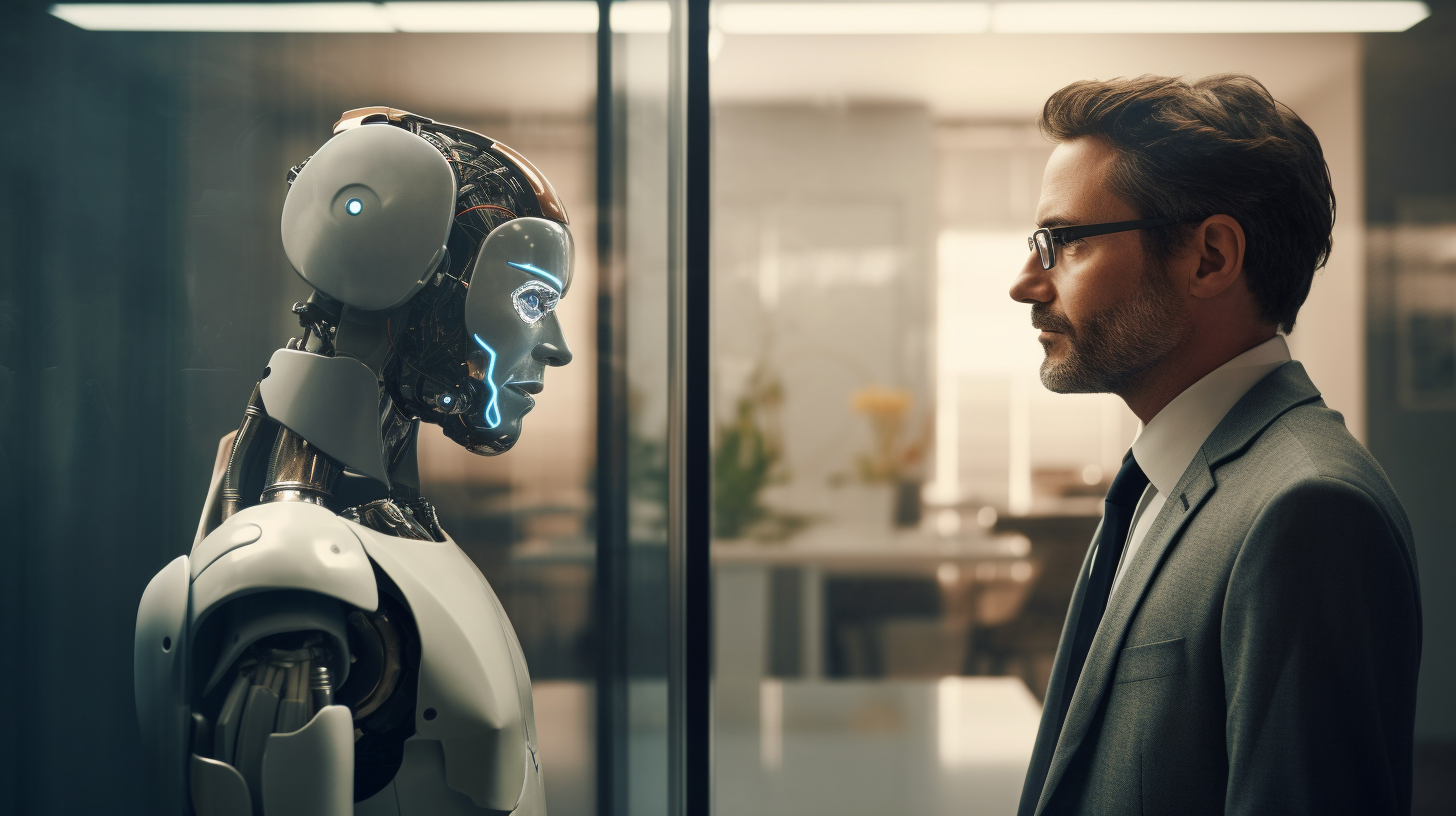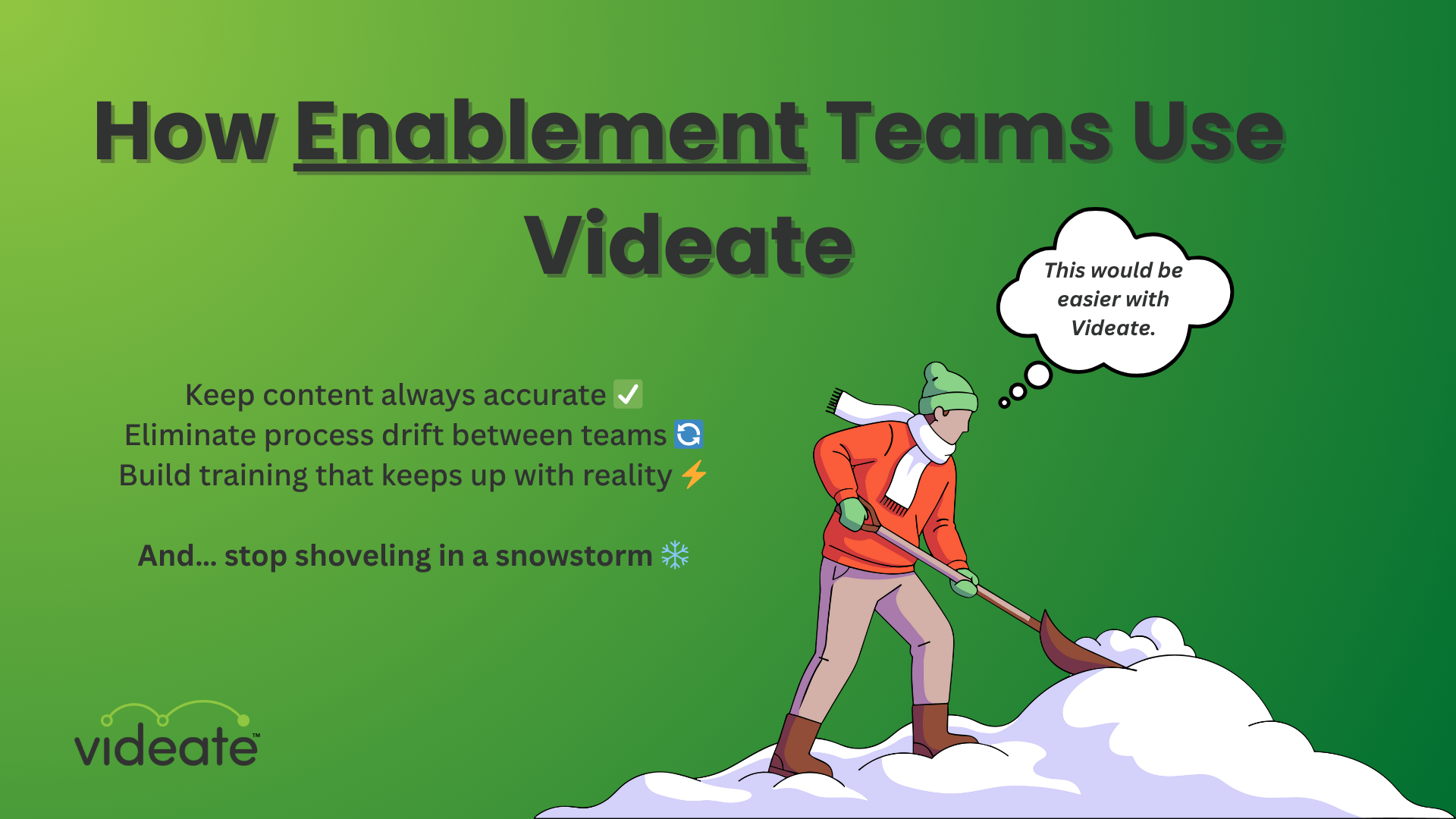
AI is changing fast. So much more rapidly than any of us expected (and we already expected speed).
Sometimes it feels like we’re on a rollercoaster that just keeps adding bigger and faster loop-de-loops, with no end in sight.
With everything changing around us, it's easy to feel like AI is taking over. Like humans won’t be needed within the next few years, and we’ll all be forced to…
I don’t know. Take up farming again?
It’s hard to think logically when fear of the future starts to creep in.
Yet, as technology advances, the need for genuine human connection actually becomes more important.
We spoke with multiple Customer Success leaders and thinkers and discovered a big trend: Humans don’t need to log off any time soon.
Here’s why.
1. The Indispensable Human Element
Despite advancements in AI and automation, people still prefer and value human connection when dealing with nuanced problems or seeking genuine empathy.
Human interaction, empathy, and understanding are critical in Customer Success. While AI and automation can handle certain tasks efficiently, these tools lack the nuanced understanding and empathetic response that humans (and especially CS professionals) are so good at providing.
According to Rachel Provan, Founder and CEO of Provan Success:
“…(T)here is definitely a line between what (AI) can do right now and the nuance of human communication. That's where I think CS is really valuable.”
But humans will be used more in “the interpersonal. More in the enterprise. The relationship building, the multi-threading, (and) understanding nuances. Understanding what questions to ask.”
Sprout Social’s Senior Director for Customer Success: Influencer Marketing Bianca Ker believes that:
“There will be a smaller space, but an even more valuable (space) for things that are made by human beings and things that are imperfect. And those imperfections will actually add to their value.”
Customer Success leaders understand that establishing genuine connections with
customers is essential for fostering trust, loyalty, and long-term satisfaction. By prioritizing the human element with their customers, SaaS companies can differentiate themselves from competitors and create memorable experiences that resonate and improve the customer experience.
2. AI’s role is augmentation, not replacement
The consensus is that AI augments human abilities rather than replacing them entirely. It enhances efficiency, handles repetitive tasks, and provides data-driven insights, allowing humans to focus on more meaningful, interpersonal aspects of their work.
As Dave Derington, Director of Customer Education at ServiceRocket aptly describes, AI is “extending our humanity”, but we’re still the ones in the driver’s seat:
"It's extending our abilities to give us superpowers. It's like the bionic man and woman, all those TV shows. They've got superpowers because they've got technology that's assisting them to do more to do better. But they're still human.
…We, as human beings, are in the middle of all of that and driving it. We’re the creative spark and the soul behind the machine."
For SaaS customer success leaders, this means leveraging AI to enhance efficiency and provide data-driven insights, while still prioritizing the human touch in customer interactions.
By striking a balance between automation and human connection, SaaS companies can deliver personalized experiences that meet the unique needs and preferences of their customers.
As Rachel Provan says,
“(AI) is gonna change all of our jobs. But I don't think we're all gonna be just out on the street selling muffins or something. …(I)t's going to enable us to do things that we weren't able to do before.
It's gonna enable us to focus on the things that actually need humans. The parts that I'm really interested in: the parts that require empathy, that require being good with others, the parts that require messaging.
I think that a lot of the day to day annoying admin work might be taken by AI, but… that's fine by me.”
3. The Complexity of Communication Requires a Human Touch
No matter how advanced AI becomes, it still struggles to grasp the complexities of human communication. This underscores the ongoing need for human involvement in customer interactions, especially in areas requiring empathy, relationship-building, and nuanced problem-solving.
Rachel Provan elaborates:
“…(T)here is definitely a line between what (AI) can do right now and the nuance of human communication. That's where I think CS is really valuable.”
But humans will be used more in “the interpersonal. More in the enterprise. The relationship building, the multi-threading, (and) understanding nuances. Understanding what questions to ask.”
Certain types of communications are definitely best when automated, as Recharge’s Enterprise Customer Success Manager of Key Accounts in EMEA Noah Little describes:
“You don't need a human being to tell you [your package is] going to be delivered November 10 between 4 and 6 PM. The machine can actually tell you that, and you're OK with that type of information. … But when you have a problem, when you have an issue, you want to talk to a human being.”
Little goes on to explain why human empathy is even more critical when things go wrong:
“I think everybody's experienced… when something goes wrong with your cell phone or your computer. And you call into AT&T Verizon or Sprint, and it's an automated voice messaging system. Click one for this, click eight for this. And what does everybody do? Click zero a thousand times until you reach a person. Because no matter how advanced a machine learning or language learning model is, you want to talk to (a human being) so they can understand the nuances, the problems.
…(H)umans are social creatures at the end of the day. And no matter how easy it might be to get an instant response, you still want to explain your unique scenario, your unique problem. And you want to be heard.
…You want somebody to actually hear you out, understand your problem, deploy empathy, and actually have a solution. Not some chat bot that says, “let me look into that for you and somebody will email you back”. Nobody likes that.
So you actually want a human being on the other side to hear you and to solve it for you. That's why we'll wait on hold for 30 minutes or an hour to actually be put through to (a person)."
This is where the human touch truly shines. It builds trust, alleviates concerns, and strengthens relationships with customers in a way that Artificial Intelligence may never be able to.
4. Evolution of Roles in the age of AI
Even though we’re starting to see where there’s still a need for humans, AI is still changing the world around us. But not necessarily in the ways you’d think.
AI will change job roles, but think of it as a job evolution rather than extinction. Instead of eliminating jobs, AI streamlines processes, freeing up time for humans to engage in more impactful and creative endeavors within their roles.
As AI continues to reshape industries, job roles are evolving, rather than disappearing entirely.
RecastSuccess’ CEO and Co-Founder Annie Dean compares this shift to the evolution of web design, where graphical interfaces replaced coding but didn't eliminate the need for web developers:
"There's definitely gonna be changes, but, you know … graphical interfaces are really invented for Web design. If you think about where it was, you had to have somebody do full coding to build a website. Now you can just kind of drag and drop the pretty pictures.
It's not like all those jobs went away and no one builds websites anymore. It's just different jobs. I think it'll be similar here. Hopefully, we're getting rid of the tedious, annoying parts and getting to spend more of our time on the impactful pieces."
Similarly, Rachel Provan notes that while AI may handle tedious admin work, humans will still be needed for tasks that require messaging and understanding nuances:
"[W]hen (some CS leaders) think about strategy, they don't understand that a human is not going to work like a computer. You can't just run a command and have them do what you want, as much as that would be convenient. It just doesn't work that way. You have to play into motivations. You have to be working with messaging to get people to actually take action, even if they want the result.
Your priorities aren't always what you'd like them to be or what you think they are as a human. And that is a difficult thing to navigate as a Customer Success leader, because it's not just gonna be A+B=C. It's gonna be A+B, except if it's raining and except if this or that, (and) then we have to pivot. …(I)t's never simple."
For SaaS Customer Success leaders, this means adapting to new technologies while continuing to prioritize the human element in customer interactions.
Embrace change and leverage AI as a tool to enhance human capabilities, and you’ll ensure your company stays ahead of the curve.
Balancing Automation with Human Connection
In conclusion, while AI and automation offer valuable tools for enhancing efficiency in customer success, the human touch remains irreplaceable.
As you consider your customer success strategies, remember to leverage AI as a tool to augment human abilities, rather than a substitute for genuine connection. By embracing the power of empathy, understanding, and genuine interaction, SaaS companies can build lasting connections that drive success for both customers and businesses.
And for those CS leaders who are hesitant to use AI tools, Rachel Provan has some final advice:
“[Keep] that mindset of ‘how could this help me’ instead of ‘how could this hurt me?’ Because these (AI tools) are meant to be leveraged. They're not meant to replace all of humanity. Literally. No one benefits from that. And keep learning, talk to other CS leaders. Talk to your peers. Find out what's working. Find out what's not, because it's an incredibly isolating job. It is the most gas-lighty profession I have ever seen.”
Videate: The Best AI Tool to Scale Video Production for SaaS Companies
Curious about all this talk of how AI can augment humans and give them “superpowers”? We’re not talking Terminator. We’re talking video production.
Video is critical for onboarding SaaS customers, offering them self-service customer support, and increasing customer time-to-value. But there’s a big problem: SaaS products are constantly updated.
So every time your Customer Success or Customer Education team produces a how-to video, it’s obsolete as soon as the next software release drops.
That’s where Videate comes in. Videate’s patented technology uses AI and automation to generate software videos at scale– no video editing skills necessary.
Get a demo and learn more about how Videate:
- Automates Video Production: Videate revolutionizes the video creation process, freeing your team from the shackles of manual labor. With its cutting-edge technology, video production becomes faster, more efficient, and significantly scalable.
- Helps You Stay Ahead of Updates: The nightmare of outdated content is a thing of the past with Videate. Embrace the confidence that your video tutorials will always reflect the latest software iterations, keeping your customers engaged and informed.
- Reduces Churn, Increases Retention: A seamless onboarding experience is key to customer retention. Videate ensures that your customers have access to the right information at the right time, reducing churn and enhancing satisfaction.
- Empowers Customer Success Teams: Videate empowers your Customer Success teams to focus on what truly matters - building relationships and providing strategic guidance. With the burden of manual video production lifted, your teams can dedicate more time to meaningful interactions.
Embrace the video revolution, cater to the demands of your audience, and redefine your B2B SaaS customer success journey through the power of automation and dynamic video tutorials.
Get a Demo today!
.png)
How Customer Success & Education Teams Use Videate



